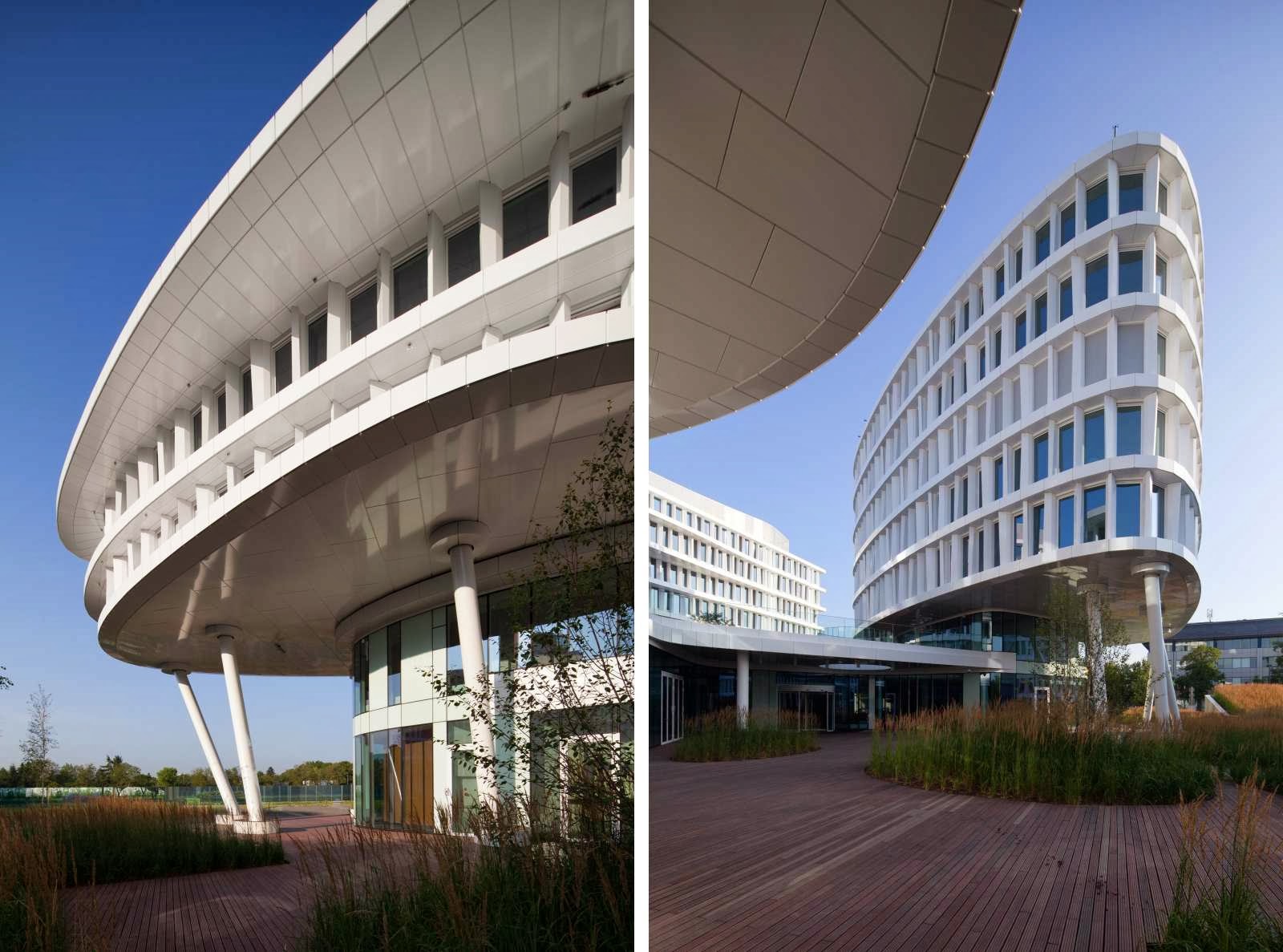The Warszawa Business Garden is a plan for a business park composed of seven buildings housing offices, shops, hotels, and a meeting centre within an area of over 90.000 m2, is situated in close proximity of Zwirki i Wigury Street which links the international airport to the city center of Warsaw.
The location provides very convenient access to the public transport facilities. It is one of three modern business parks to be developed by SwedeCenter under the common Business Garden brand in Poland.
The Studio Fuksasdesigned the Building n. 1, which hosts several functions, a hotel with 206 rooms arranged on 5 levels, a Congress Center for about 800 seats, an event Centre, retail areas, a restaurant, a cafoffice spaces and 280 car parks.
The different functions are distributed around an open space on the ground floor, nodal point where accessing various areas, organised in such a way that they can be used separately or, as required, merged.
The front opening of the Park on the first floor has a large "green" terrace, located in front of the restaurant and can be used for all events connected to the hotel as the Convention Center.
The max height of the complex is 25 m. The 3 on the 2 upper floors jut below to create a sort of shelter that protects throughout the building guests, visitors or buyers from rain and snow.
A sculptural volumetric strength showing the different functions which had to be integrated in the design process are the basic idea of the complex while taking care about the surrounding aspects of the closer cityscape of Warsaw and the idea of the central Wisniowy Garden Park.
The facades towards streets are straight, while the fae lines towards the park are moving slightly. The file rouge of the interior design is the use of color for defining spaces and creating environments full of ambience. Deep shaded colours alternate through the floors and define the reception and communal areas rather than the individual rooms.
The way traced by the hotel corridors is characterized by an interplay of lights and dimensions. On the lateral walls, growing protrusions take the shape of separated steps that gradually narrow the visual field up to the end of the path.
The dimensional effect is highlighted by a coloured pattern that runs obliquely all along the way, thus reshaping the perception of space from an artistic point of view.
Location: Żwirki i Wigury, Warsaw, Poland
Architects: Massimiliano and Doriana Fuksas
General Project: JSK Architekci
Developer: SwedeCenter
General Contractor: Hochtief Polska
Area: 14,926 sqm
Year: 2013
Developer: SwedeCenter
Photographs: Piotr Krajewski
Architects: Massimiliano and Doriana Fuksas
General Project: JSK Architekci
Developer: SwedeCenter
General Contractor: Hochtief Polska
Area: 14,926 sqm
Year: 2013
Developer: SwedeCenter
Photographs: Piotr Krajewski






















